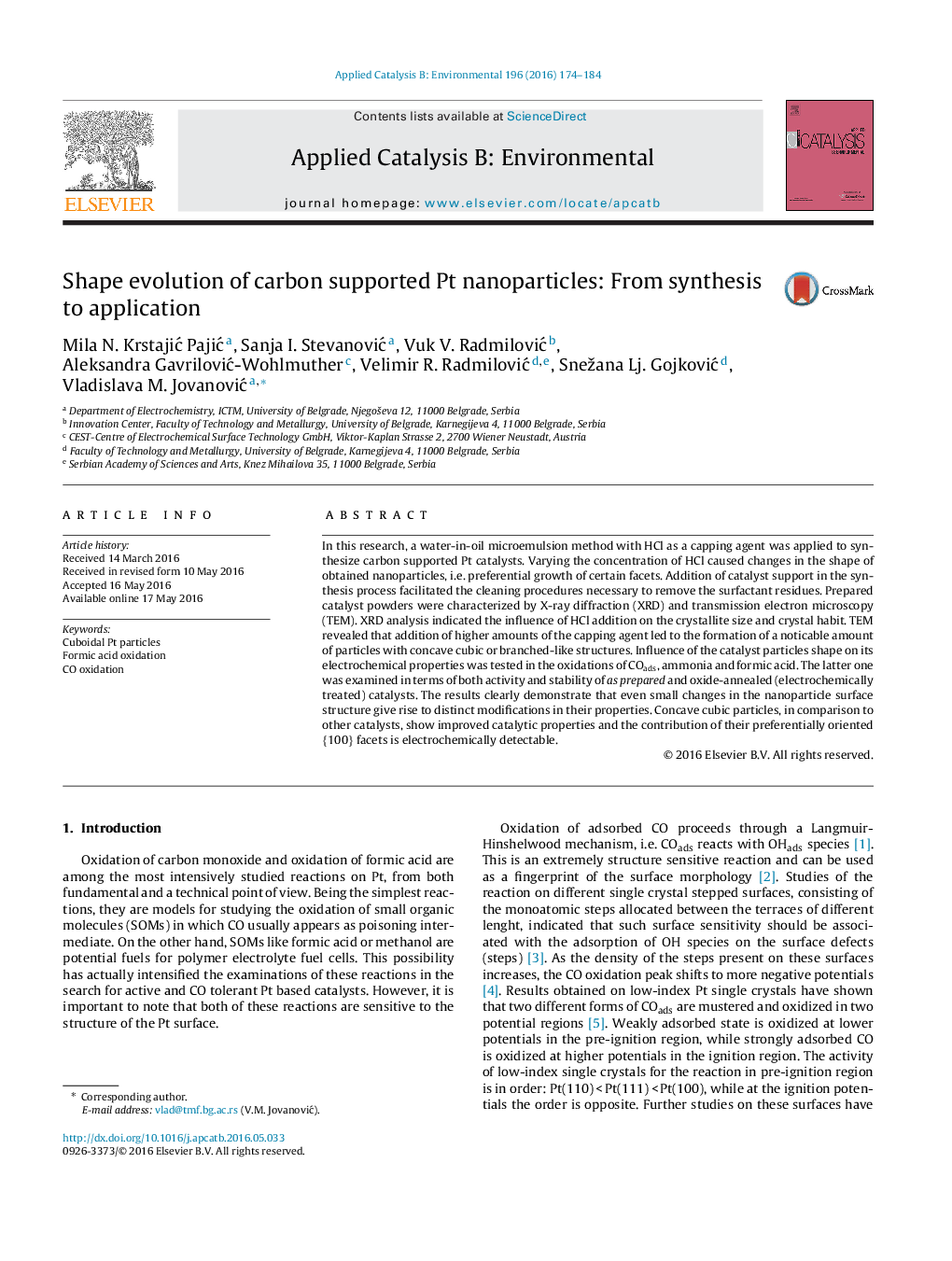| Article ID | Journal | Published Year | Pages | File Type |
|---|---|---|---|---|
| 44982 | Applied Catalysis B: Environmental | 2016 | 11 Pages |
•A study addresses the shape evolution of carbon supported Pt nanoparticles from cubooctaedron to concave cubic and branched like structures.•Nanoparticles were synthesized by water-in-oil microemulsion method with addition of HCl and Vulcan XC-72R as the particles support.•Addition of the support facilitated the cleaning procedures enabling the application of the catalysts without the electrochemical treatment.•XRD and TEM results revealed that synthesized particles are smaller in size (4–8 nm) compared to some previously reported.•Concave cubic particles with electrochemically detectable {100} preferentially oriented facets show improved catalytic properties.
In this research, a water-in-oil microemulsion method with HCl as a capping agent was applied to synthesize carbon supported Pt catalysts. Varying the concentration of HCl caused changes in the shape of obtained nanoparticles, i.e. preferential growth of certain facets. Addition of catalyst support in the synthesis process facilitated the cleaning procedures necessary to remove the surfactant residues. Prepared catalyst powders were characterized by X-ray diffraction (XRD) and transmission electron microscopy (TEM). XRD analysis indicated the influence of HCl addition on the crystallite size and crystal habit. TEM revealed that addition of higher amounts of the capping agent led to the formation of a noticable amount of particles with concave cubic or branched-like structures. Influence of the catalyst particles shape on its electrochemical properties was tested in the oxidations of COads, ammonia and formic acid. The latter one was examined in terms of both activity and stability of as prepared and oxide-annealed (electrochemically treated) catalysts. The results clearly demonstrate that even small changes in the nanoparticle surface structure give rise to distinct modifications in their properties. Concave cubic particles, in comparison to other catalysts, show improved catalytic properties and the contribution of their preferentially oriented {100} facets is electrochemically detectable.
Graphical abstractFigure optionsDownload full-size imageDownload as PowerPoint slide
